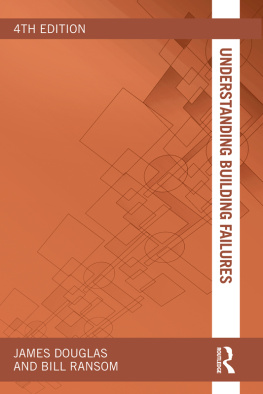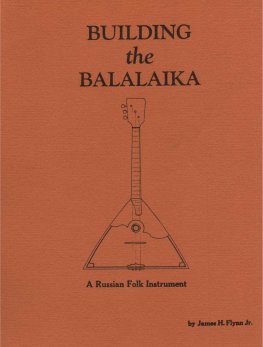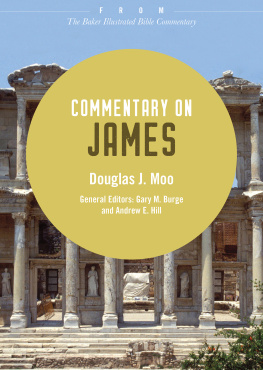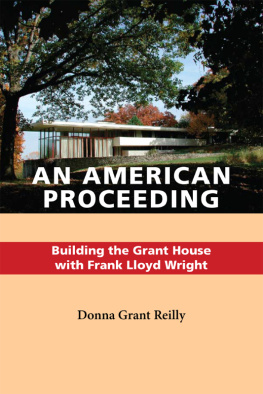Douglas James - Understanding Building Failures
Here you can read online Douglas James - Understanding Building Failures full text of the book (entire story) in english for free. Download pdf and epub, get meaning, cover and reviews about this ebook. City: New York;N.Y, year: 2013, publisher: Routledge, genre: Romance novel. Description of the work, (preface) as well as reviews are available. Best literature library LitArk.com created for fans of good reading and offers a wide selection of genres:
Romance novel
Science fiction
Adventure
Detective
Science
History
Home and family
Prose
Art
Politics
Computer
Non-fiction
Religion
Business
Children
Humor
Choose a favorite category and find really read worthwhile books. Enjoy immersion in the world of imagination, feel the emotions of the characters or learn something new for yourself, make an fascinating discovery.
- Book:Understanding Building Failures
- Author:
- Publisher:Routledge
- Genre:
- Year:2013
- City:New York;N.Y
- Rating:3 / 5
- Favourites:Add to favourites
- Your mark:
- 60
- 1
- 2
- 3
- 4
- 5
Understanding Building Failures: summary, description and annotation
We offer to read an annotation, description, summary or preface (depends on what the author of the book "Understanding Building Failures" wrote himself). If you haven't found the necessary information about the book — write in the comments, we will try to find it.
Understanding Building Failures — read online for free the complete book (whole text) full work
Below is the text of the book, divided by pages. System saving the place of the last page read, allows you to conveniently read the book "Understanding Building Failures" online for free, without having to search again every time where you left off. Put a bookmark, and you can go to the page where you finished reading at any time.
Font size:
Interval:
Bookmark:
Understanding Building Failures
Building defects still continue to plague the construction industry. The lessons learned over the last 40 years have not been fully applied. Many new or refurbished buildings still leak or crack. Lack of awareness by designers and installers as to the main mechanisms that trigger such failures remains a problem for the industry.
Investigating and rectifying building failures form a major part of building surveyors bread and butter work. This book provides guidance on this work for typical residential, commercial and industrial buildings with advice on how to diagnose a wide range of defects with an emphasis on evidence-based practice throughout. It considers both modern and older construction methods, together with new and traditional materials. The particular problems of alteration and renovation work are also discussed.
The first four chapters provide information and guidance on the methodology for investigating failures how to prepare for and conduct an investigation into a building defect and subsequently diagnose its cause in a logical manner.
This fourth edition has been updated and expanded to cover the latest diagnostic procedures and research. It also includes Appendices and a new Bibliography, and provides an extensive list of books on building pathology and related topics in the UK and North America. Essential reading for all students and practitioners interested in building surveying and building conservation.
James Douglas retired as a Lecturer and Course Leader in Building Surveying at Heriot-Watt University, Edinburgh, at the end of December 2009. He qualified as a chartered building surveyor in 1986 after over 12 years in the public sector, dealing primarily with the maintenance and adaptation of buildings. In 1992 the College of Estate Management appointed him as a Visiting Lecturer in Technology, teaching and tutoring building technology and maintenance technology on its Diploma in Surveying course. In December 2012, as this book was nearing completion, he passed away after a long battle with illness.
Bill Ransom was a government research scientist working for the Building Research Establishment (BRE), the Department of the Environment and the Colonial Office, travelling widely abroad to help resolve problems in construction technology. He retired in 1981 as head of the Building Integrity Division of the BRE and now lives in Devon.
Understanding Building Failures
Fourth edition
James Douglas and Bill Ransom

First edition published 1981
by E & FN Spon
Second edition published 1987
by E & FN Spon
Reprinted 1990, 1993, 1995, 1996, 2001
by Spon Press
Third edition published 2007
by Taylor and Francis
This edition published 2013
by Routledge
2 Park Square, Milton Park, Abingdon, Oxon, OX14 4RN
Simultaneously published in the USA and Canada
by Routledge
711 Third Avenue, New York, NY 10017
Routledge is an imprint of the Taylor & Francis Group, an informa business
2013 James Douglas and Bill Ransom
The right of James Douglas and Bill Ransom to be identified as authors of this work has been asserted by them in accordance with sections 77 and 78 of the Copyright, Designs and Patents Act 1988.
All rights reserved. No part of this book may be reprinted or reproduced or utilised in any form or by any electronic, mechanical, or other means, now known or hereafter invented, including photocopying and recording, or in any information storage or retrieval system, without permission in writing from the publishers.
Trademark notice: Product or corporate names may be trademarks or registered trademarks, and are used only for identification and explanation without intent to infringe.
British Library Cataloguing in Publication Data
A catalogue record for this book is available from the British Library
Library of Congress Cataloging-in-Publication Data
Douglas, James (James E. H.)
Understanding building failures / James Douglas and
Bill Ransom. -- Fourth edition.
pages cm
Includes bibliographical references and index.
1. Building failures. 2. Buildings--Defects. 3. Buildings--Repair and reconstruction. I. Ransom, W. H. II. Title.
TH441.D68 2013
690.21--dc23
2012031319
ISBN13: 978-0-415-50878-0 (hbk)
ISBN13: 978-0-415-50879-7 (pbk)
ISBN13: 978-0-203-12517-5 (ebk)
Despite the growing awareness as to many of their common causes and consequences, failures still seem to bedevil the building industry here in the UK and elsewhere in the developed world. This edition addresses the reasons for this problem and offers some guidance on how it can be tackled. There is still a need to understand the circumstances behind the occurrence and investigation of defects in buildings. This understanding will address the following journalist questions:
- How? (the agencies and mechanisms)
- Why? (the aetiology and diagnosis)
- When? (the timing and longevity)
- Where? (the location and position)
- Who? (culpable and responsible person/s).
Why is the need to understand defects of such importance for construction professionals such as building surveyors, architects and others? There are three main reasons for the increase in demand for this knowledge. Firstly, there is the ambitious target of zero defects as articulated in the British building industrys key performance indicators (KPIs). This will only be attained, if at all, if professionals, contractors and operatives are made aware of the causes and consequences of building failures.
Secondly, repair and legal costs resulting from defects remain high. This is a disruptive as well as expensive process for clients and others involved.
Thirdly, the launch of the Home Condition Report means that surveyors undertaking this service need to have a sound knowledge of building construction as well as an ability to identify and diagnose relevant defects.
Much of the insights related to diagnostics in this edition such as decision making and critical thinking are derived from the medical and nursing professions. The primary reason for this is that the diagnostics experience and research base of these healthcare disciples are well in advance of those for construction.
The growth in textbooks dealing with defects has been slow but steady. For many years that by Eldridge (1974) was the standard reference text on building failures in the UK. That all changed in the 1980s with the increasing number of books on building surveys and inspections (e.g. Bowyer 1994; Melville and Gordon 1993; and Mika 1989). The works by Cook and Hinks (1992), Melville and Gordon (1997), NBA (1983) and Son and Yuen (1993) remain among the main literature on defects. Hunt (2009) and Rushton (2006) deal with defects in domestic and non-domestic buildings, respectively.
A basic premise of this edition is that in order to understand best how buildings fail, one should first understand how they work. Construction technology is about how buildings work; Building Pathology is about how and why they fail. Thus a sound knowledge of building construction is useful if not essential in understanding the causes and mechanisms of defects.
What makes this edition different from many of the other books on building problems is that it addresses the process of defects diagnosis in more detail. , includes coverage on service life assessment.
Also contained in this new edition are four appendices containing a glossary, and presenting several sample defects data schedules and reports.
Permissions
Improvements in building techniques, understanding of the reasons for, and the prevention of, failures, the encouragement of sensible innovation and the development of safe standards owe much to the Building Research Establishment (BRE), the now defunct Property Services Agency, the British Board of Agrment, the International Council for Research and Innovation in Building and Construction, and the British Standards Institution. So, too, does this book.
Next pageFont size:
Interval:
Bookmark:
Similar books «Understanding Building Failures»
Look at similar books to Understanding Building Failures. We have selected literature similar in name and meaning in the hope of providing readers with more options to find new, interesting, not yet read works.
Discussion, reviews of the book Understanding Building Failures and just readers' own opinions. Leave your comments, write what you think about the work, its meaning or the main characters. Specify what exactly you liked and what you didn't like, and why you think so.












